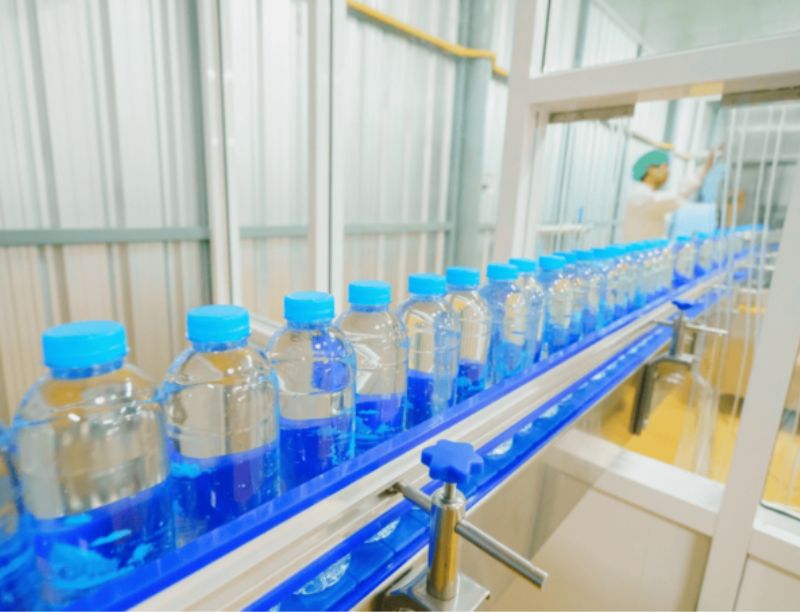Introduction:
In an era of environmental consciousness, consumers increasingly seek sustainable alternatives to their everyday products, and bottled water is no exception. The demand for bottled spring water that not only quenches thirst but also aligns with eco-friendly values is rising. Bottled water has long been a convenient choice for consumers seeking hydration.
However, the environmental toll of plastic bottles has sparked a demand for more sustainable alternatives. Sustainable bottled spring water emerges as a potential solution, combining the purity of natural spring water with environmentally conscious practices.
This article explores the landscape of sustainable bottled spring water, delving into the environmental impact of traditional plastic bottles, the emergence of eco-friendly packaging, and brands’ efforts to balance consumer convenience with ecological responsibility. It also discusses its benefits, challenges, and innovations shaping its future.
The Environmental Impact of Traditional Plastic Bottles:
Bottled water has long been a convenient source of hydration, but the environmental toll of single-use plastic bottles must be noticed. The production of these bottles contributes to carbon emissions, and their disposal often results in pollution, especially in oceans and waterways.
The need to address these environmental issues urgently has prompted the bottled water industry to reevaluate its practices and adopt more sustainable approaches.
The Emergence of Eco-Friendly Packaging:
One key development in the pursuit of sustainable bottled spring water is the shift towards eco-friendly packaging. Companies are exploring alternatives to traditional plastic, such as plant-based plastics, recycled materials, and innovative compostable options.
These eco-friendly materials aim to reduce the carbon footprint associated with bottled water and minimize the impact on ecosystems.
Innovations in Bottle Design:
Beyond the materials used, innovations in bottle design play a crucial role in enhancing sustainability. Lightweight, a process that reduces the amount of plastic used in each bottle, has gained traction, leading to decreased energy consumption during production and transportation.

Additionally, introducing refillable and reusable bottles encourages consumers to adopt more sustainable practices by minimizing single-use plastic waste.
The Role of Corporate Responsibility:
Growing consumer consciousness of environmental issues has led to brands becoming increasingly expected to demonstrate corporate responsibility. Many bottled spring water industry companies are embracing sustainability as a core value.
From investing in renewable energy sources to participating in environmental conservation initiatives, these brands are taking steps to offset their environmental impact and favorably impact the communities in which they do business.
Balancing Sustainability with Consumer Convenience:
While sustainability is a top priority, bottled water companies also recognize the importance of meeting consumer expectations for convenience and accessibility. Striking a balance between sustainability and convenience is a delicate task.
Brands are addressing this challenge by optimizing their supply chains, adopting efficient production methods, and exploring new distribution models that reduce environmental impact.
Certifications and Standards:
Many bottled spring water brands seek certifications and adhere to industry standards to provide transparency and build consumer trust. Certifications such as Carbon Trust, Cradle to Cradle, and Forest Stewardship Council (FSC) ensure that the production and packaging processes meet specific environmental and social criteria. These accreditations assist customers in making knowledgeable decisions and support companies committed to sustainability.
Community Engagement and Conservation Initiatives:
Sustainable bottled spring water goes beyond the bottle itself; it encompasses the entire ecosystem in which it is sourced. Many companies actively engage with local communities and implement conservation initiatives to protect water sources. This collaborative approach safeguards the environment and contributes to the well-being of communities that rely on these water sources.
Consumer Education and Awareness:
An essential aspect of the sustainable bottled spring water movement is consumer education. Brands are investing in awareness campaigns to inform consumers about the environmental impact of traditional bottled water and the benefits of choosing sustainable alternatives.
Due to their increased propensity to make ecologically responsible decisions, educated consumers will demand-friendly products and encourage industry-wide change.
Challenges and Opportunities:
Despite the strides made in sustainable bottled spring water, challenges persist. The cost of eco-friendly packaging, consumer resistance to change, and the need for widespread infrastructure for recycling and composting are hurdles that the industry must overcome. Nonetheless, these difficulties offer chances for creativity, cooperation, and industry-wide transformation.
- Perceived Greenwashing: In an era of greenwashing—the deceptive marketing of a product as environmentally friendly—consumers may question the authenticity of sustainability claims made by some bottled water brands. Companies need to be transparent about their practices to build trust.
- Energy-Intensive Production: Bottled water production and packaging can still be energy-intensive even when sustainable. The industry faces the challenge of finding ways to reduce energy consumption and transition to renewable energy sources.
- Transportation Impact: The transportation of bottled water from its source to consumers can contribute to carbon emissions. Companies are exploring ways to optimize transportation routes and invest in green logistics to mitigate this impact.
Also Read: Top Premium Spring Water Brands in 2023
Benefits of Sustainable Bottled Spring Water
Here are the following benefits of sustainable bottled spring water

Environmental Preservation:
By responsibly sourcing water and using eco-friendly packaging, sustainable bottled spring water brands contribute to preserving natural ecosystems and biodiversity.
Reduced Plastic Pollution:
Traditional plastic bottles contribute significantly to the global plastic pollution crisis. Sustainable alternatives aim to reduce the reliance on virgin plastic, lessening the impact on oceans and landfills.
Community Engagement:
Many sustainable bottled spring water companies actively participate with local communities, endorsing projects that improve water access and quality. This fosters positive relationships and ensures that the extraction process benefits, rather than harms, the communities involved.
Innovations Shaping the Future
Plant-Based Packaging:
Innovations in packaging materials are crucial for the sustainability of bottled water. Plastics made from plants sourced sustainably, like sugarcane or corn, are gaining popularity as alternatives to traditional petroleum-based plastics.
Circular Economy Initiatives:
Adopting circular economy principles involves designing products for reuse, recycling, and minimal waste. Some sustainable bottled spring water brands are exploring closed-loop systems to ensure their packaging is recycled and reused efficiently.
Technology for Source Monitoring:
Advances in technology, including satellite imaging and data analytics, enable companies to monitor and manage their water sources more effectively.
This ensures that extraction practices remain sustainable and do not negatively impact ecosystems.
Conclusion:
The rise of sustainable bottled spring water signals a positive shift towards a more eco-conscious future. As consumers demand transparency, responsibility, and environmental stewardship from the bottled water industry, brands respond with innovative solutions and a commitment to sustainability.
The journey towards truly sustainable practices is ongoing. Still, the momentum generated by environmentally conscious consumers and forward-thinking companies bodes well for the future of bottled spring water and the planet.
By choosing sustainable options, consumers can quench their thirst and contribute to preserving our precious natural resources for generations to come.
Also Have A Look ON: A Comprehensive Look at Bottled Spring Water: The Refreshing Elixir

